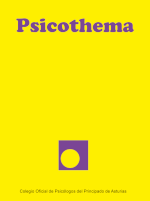Abstract
Background: Child sexual abuse continues to be a problem aggravated by difficulty of detection. The aim of this study was to compare intra-familial (IF) and extra-familial (EF) child sexual abuse cases in search of differential variables that may allow for better intervention and prevention. Method: A sample of 221 forensic/legal cases (44.8% IF and 55.2% EF) dealing with children between 3 and 18 years of age (75% female) was analysed. Results: IF sexual abuse was significantly more likely to occur more than once (p = .000; OR = 6.353), with greater delay in its revelation (>1 year OR = 8.132), and with younger victims (9.05 vs. 11.45; p = .000). Intellectual disability was more prevalent among EF victims (p = .017; OR = 3.053). There was a higher proportion of reconstructed families, more legal records, and more histories of domestic violence among IF sexual abuse families. Even among EF cases, 78% of abusers were known to the victims, and in around 80% of all cases the abuse was reported by a family member. Conclusion: Results point to the need for further development of detection programs in schools, police or health contexts since reporting by professionals is scarce.Downloads
Download data is not yet available.
